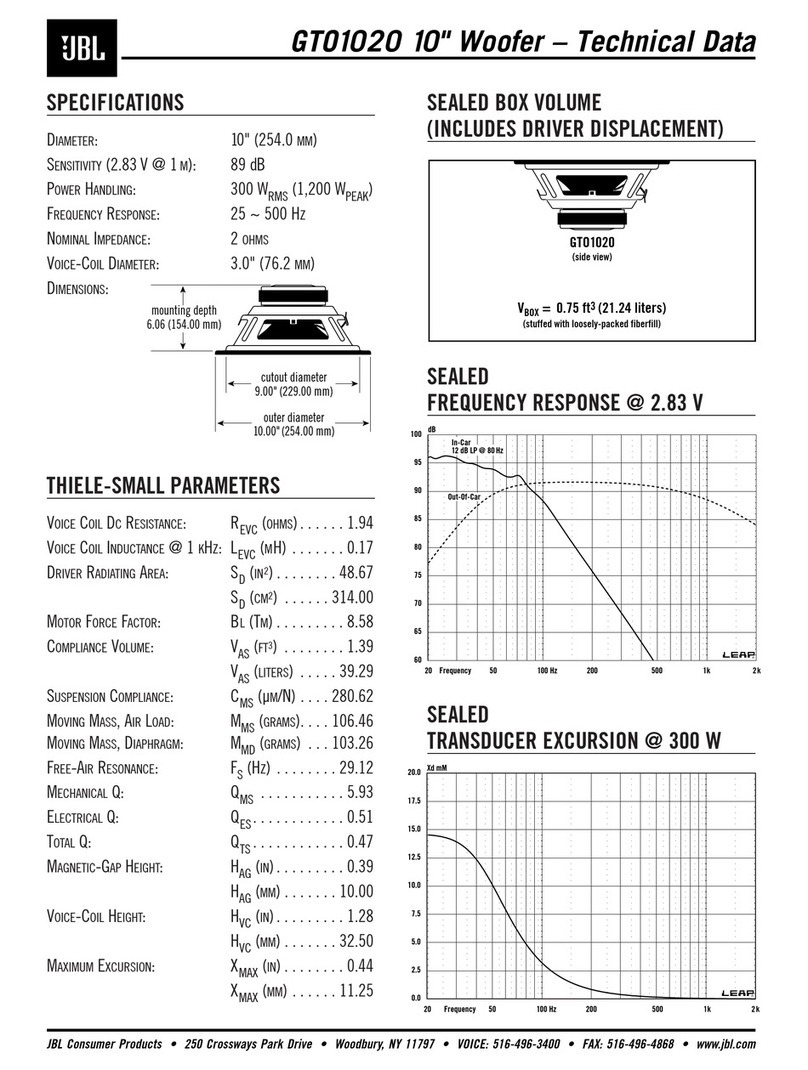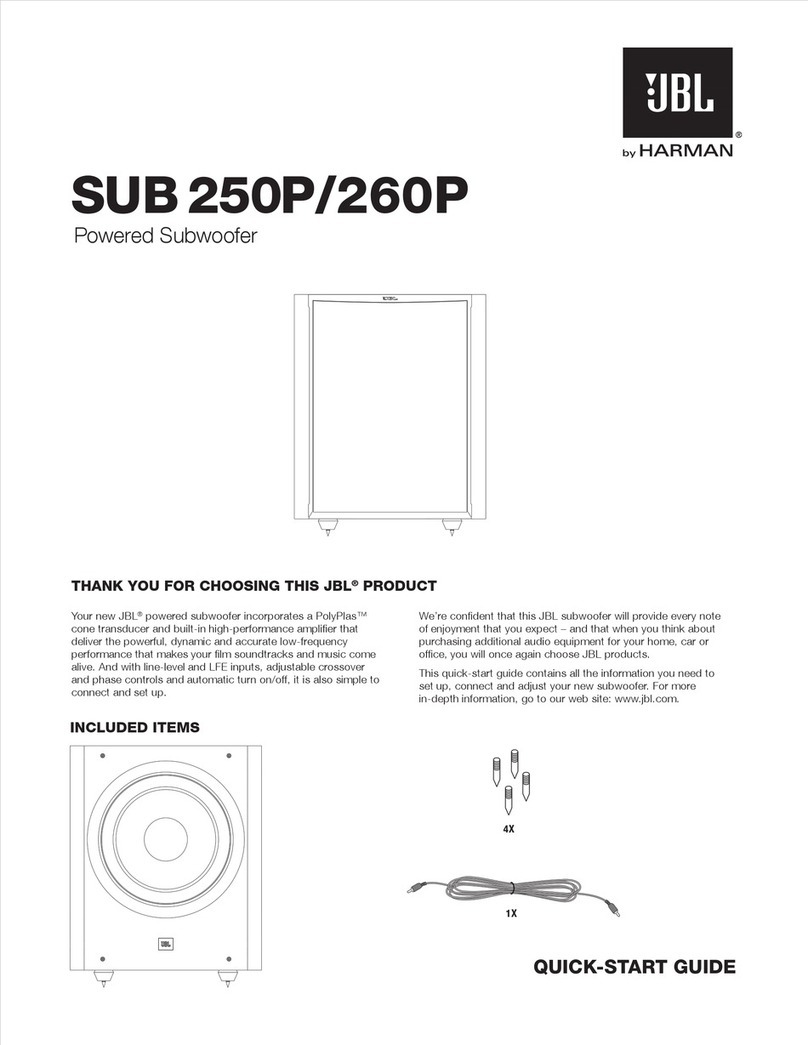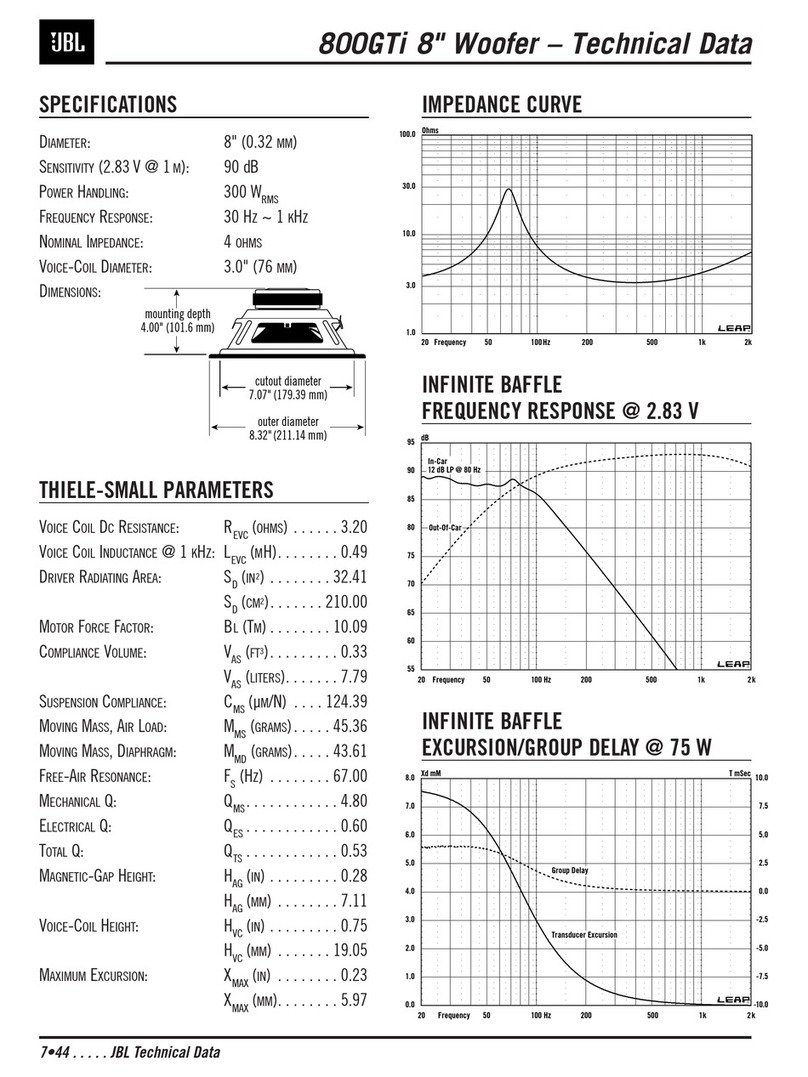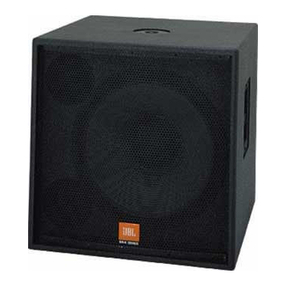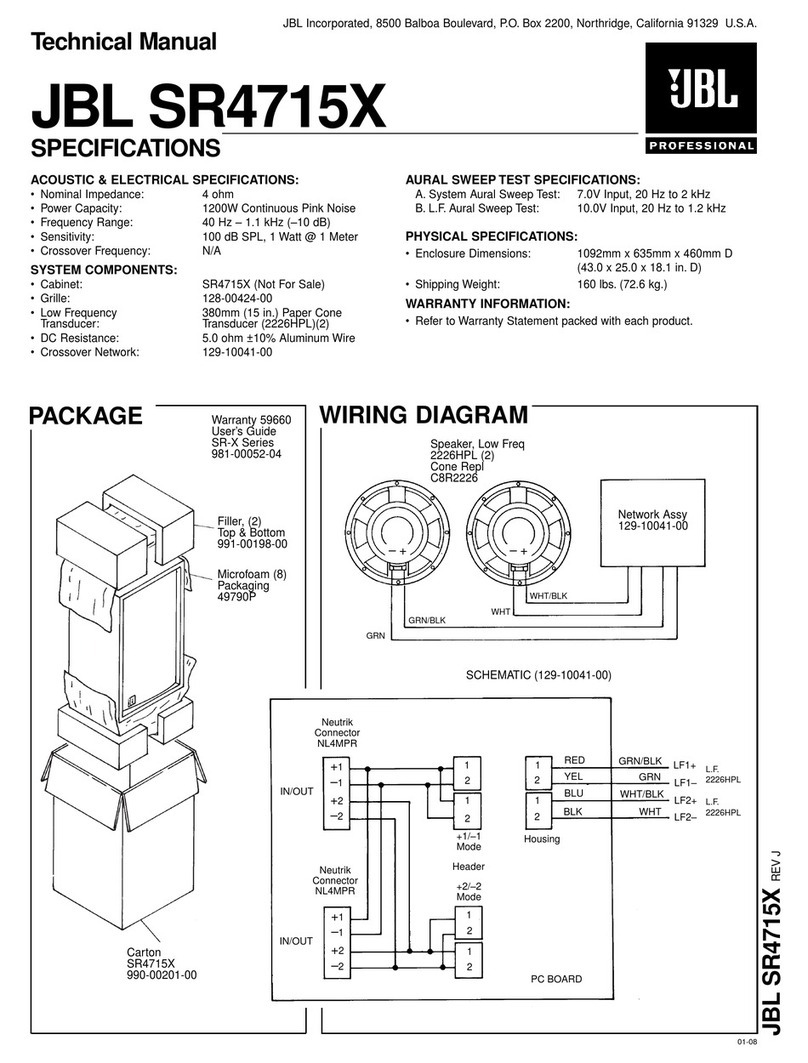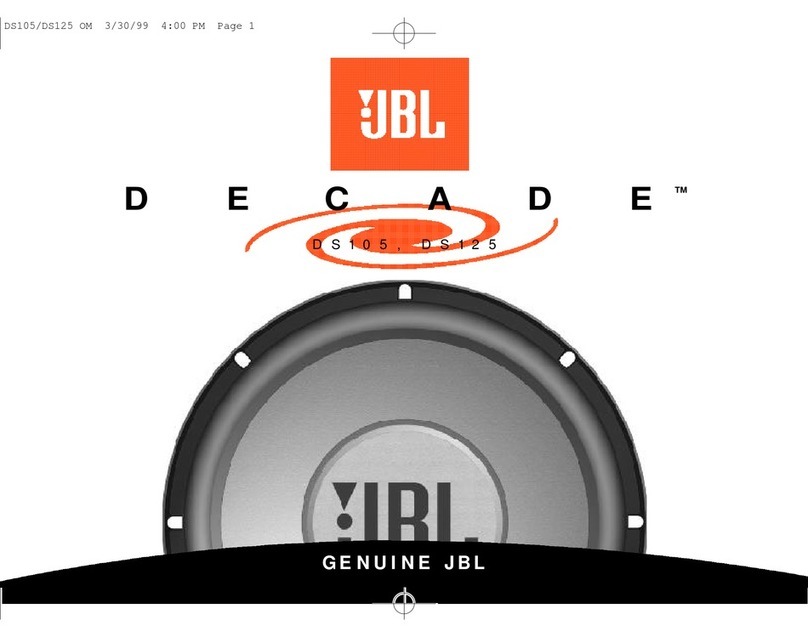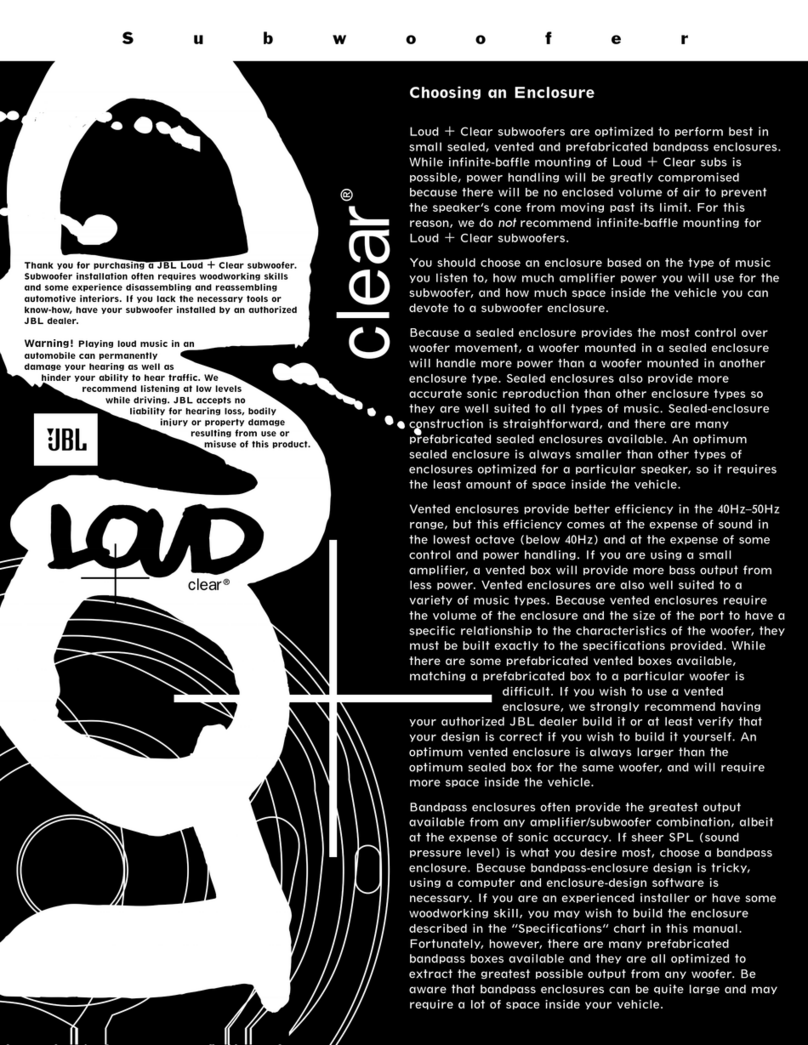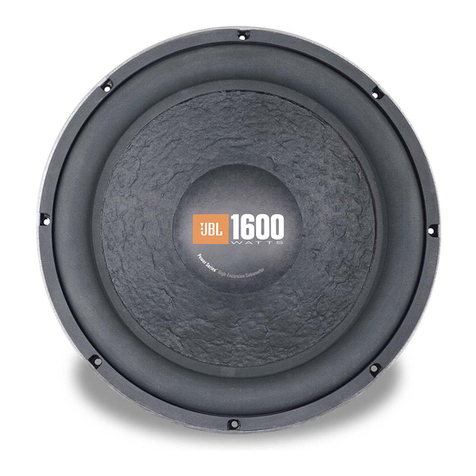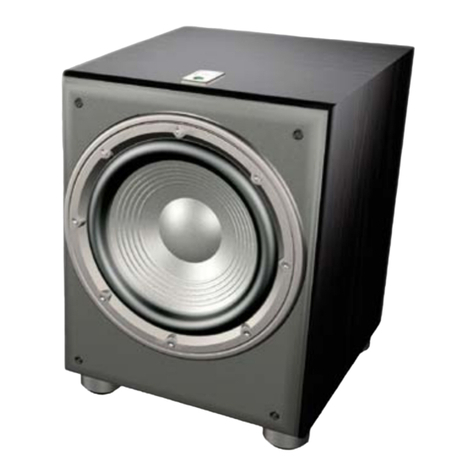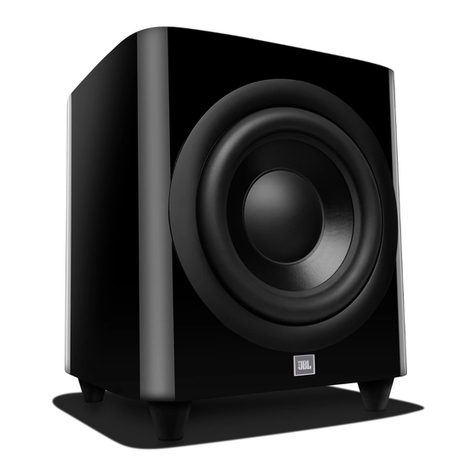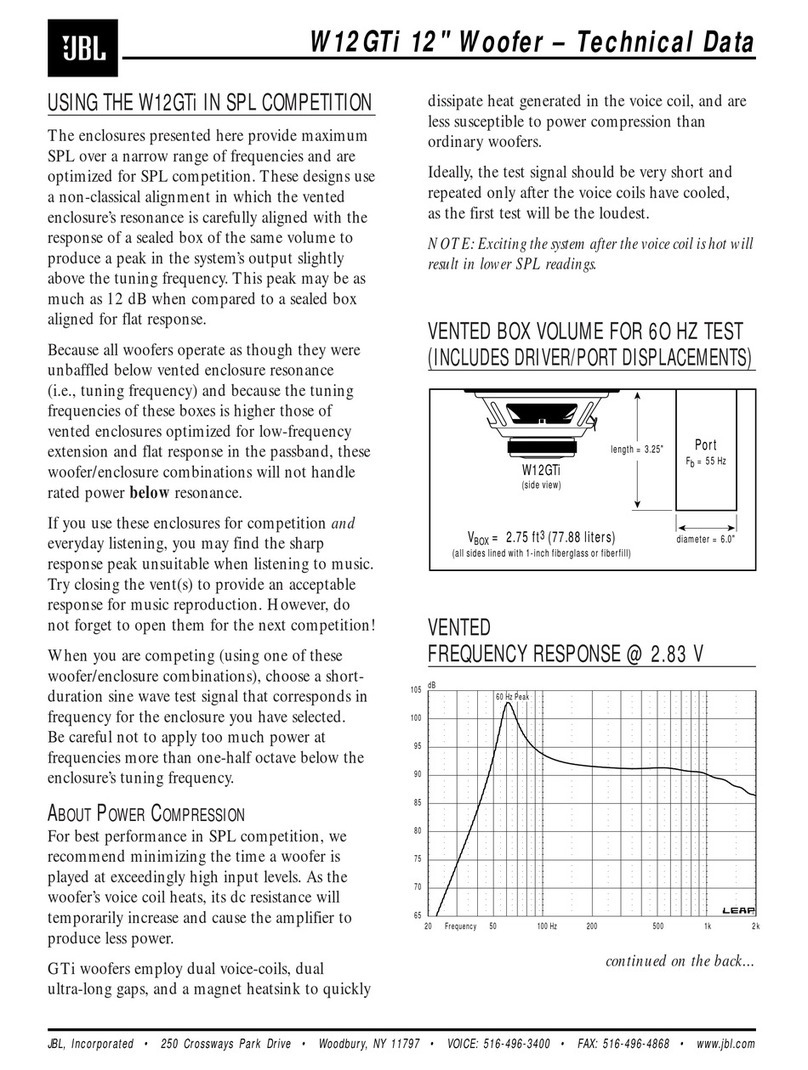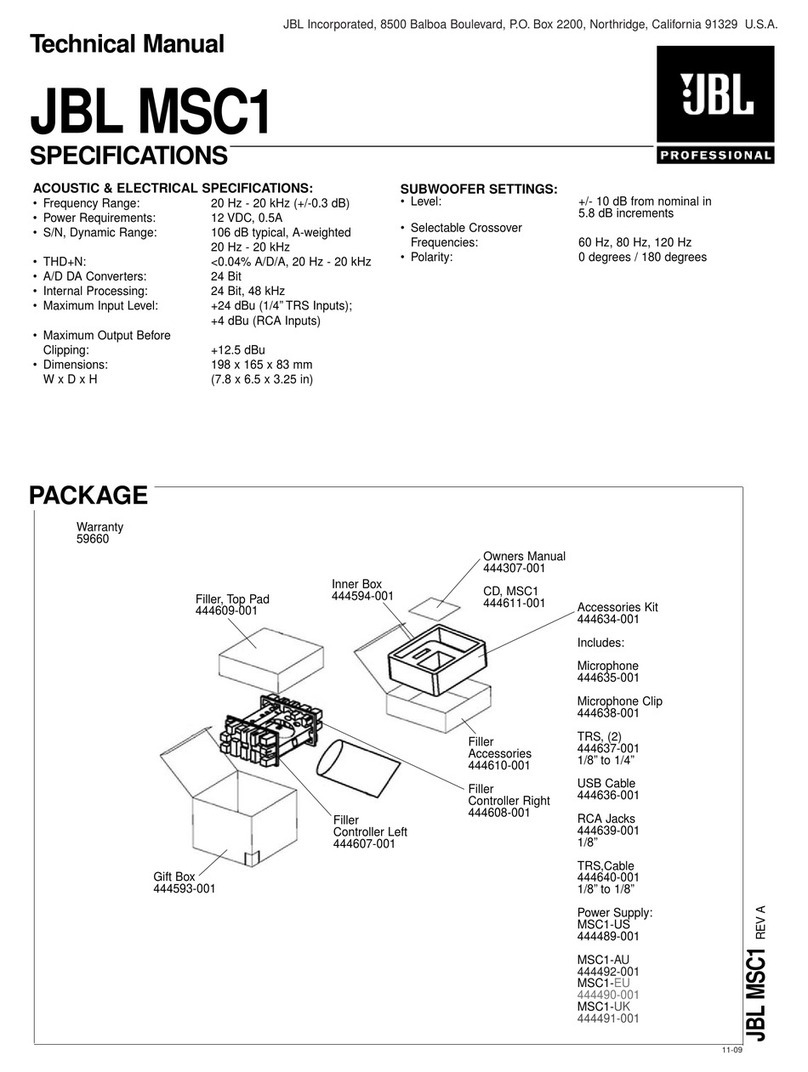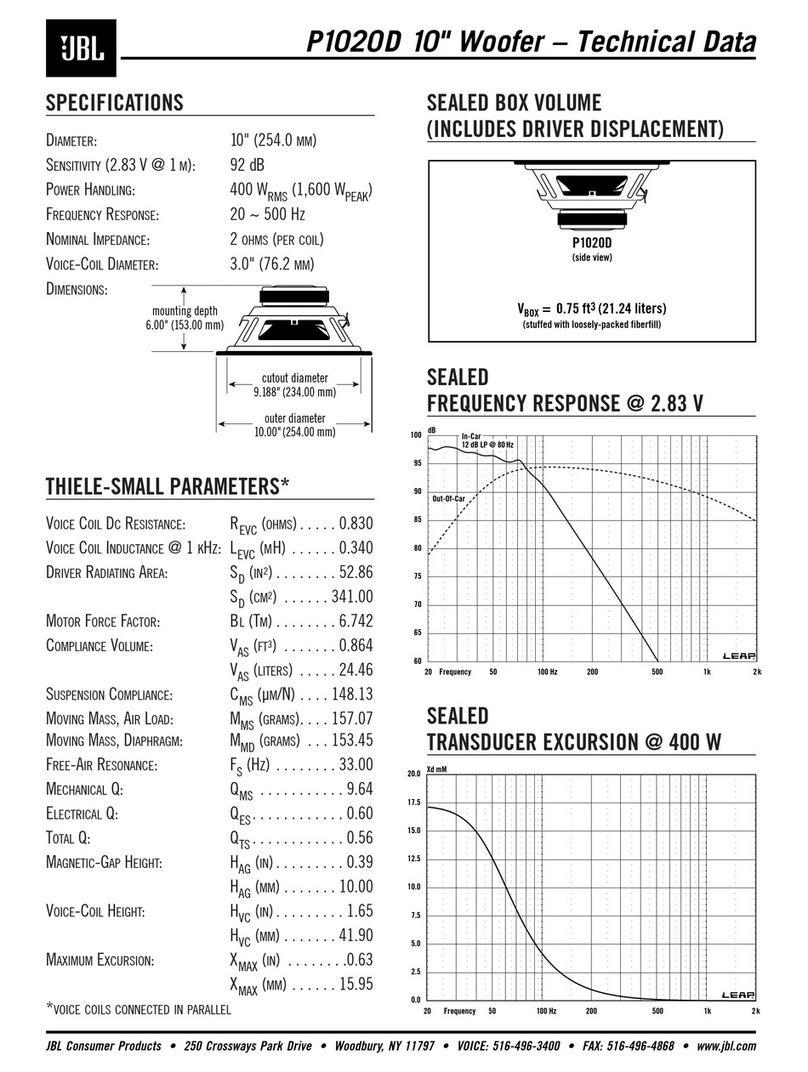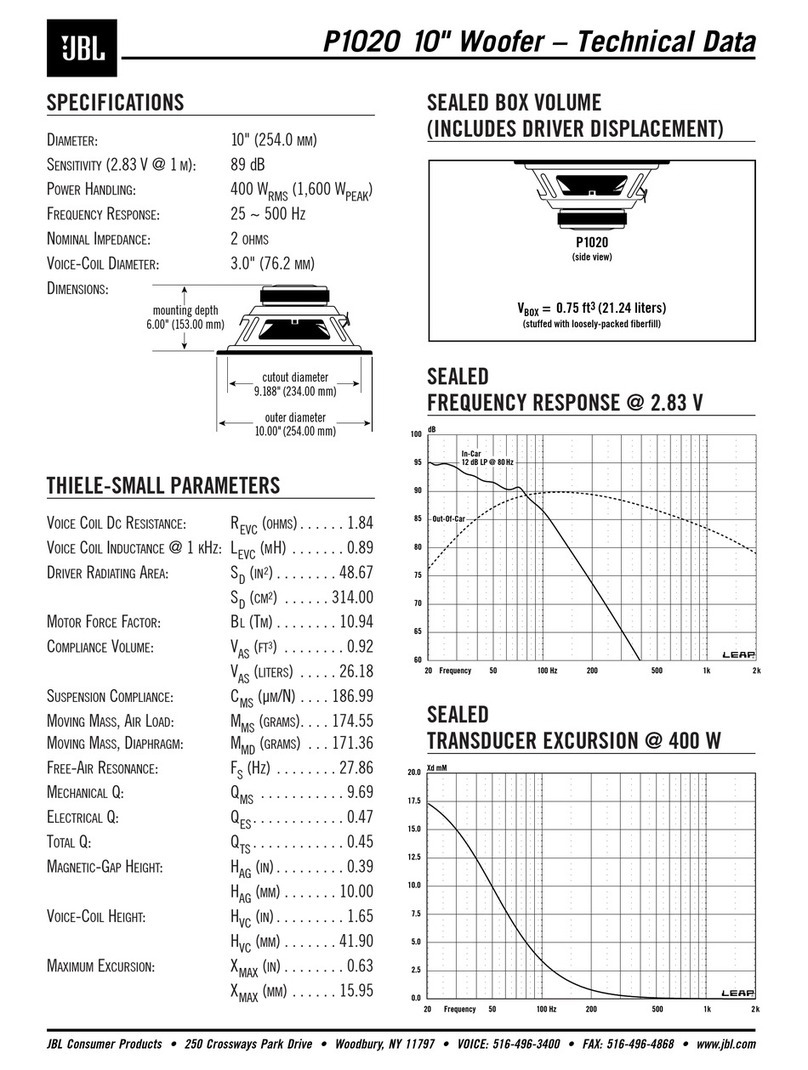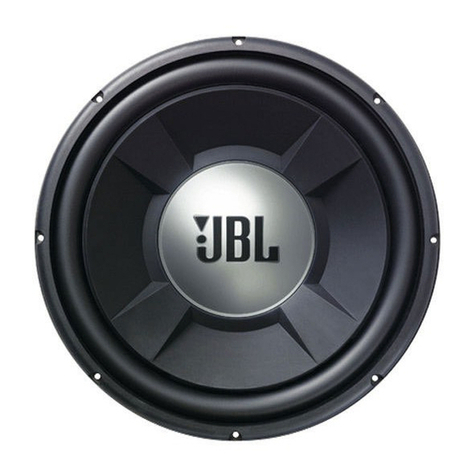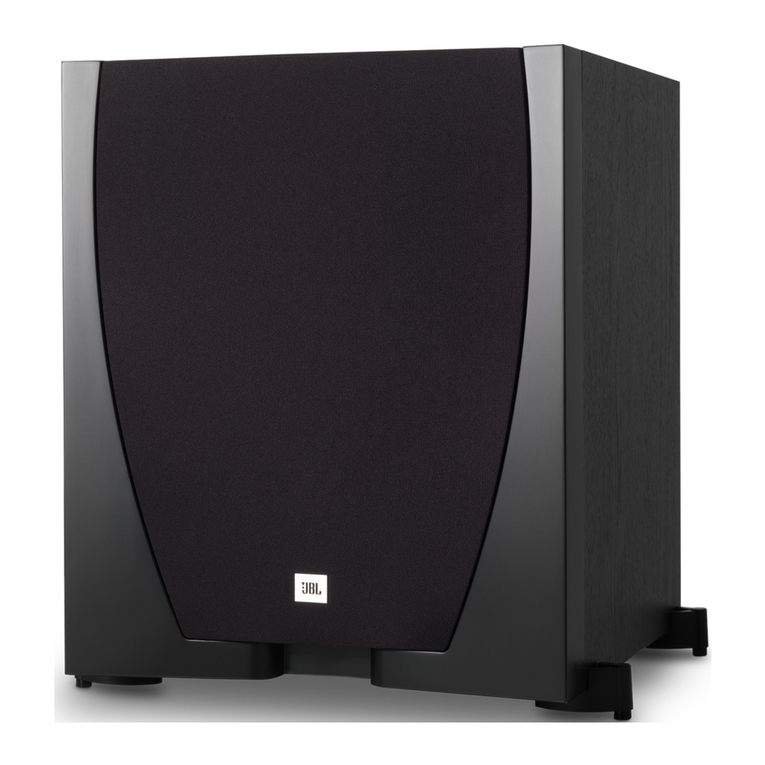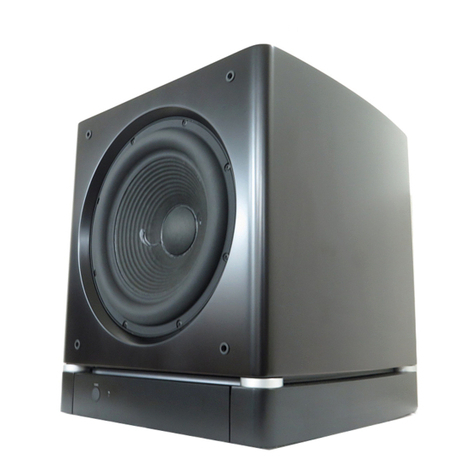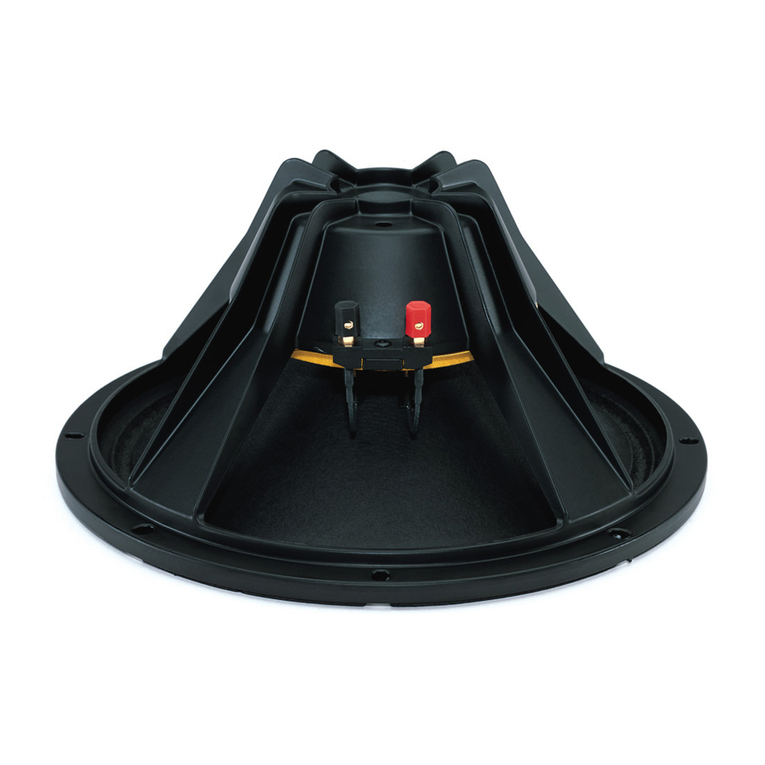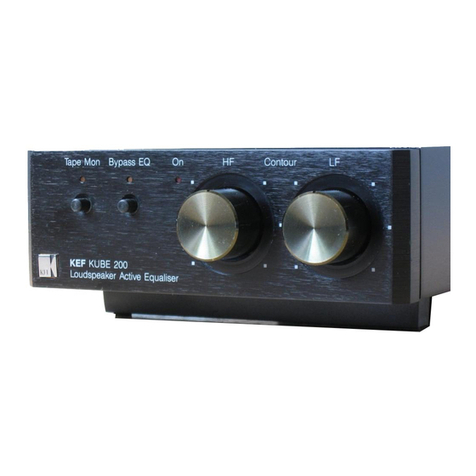
3
you to eliminate the guess-work and create reliable mixes that translate to any environment. Additionally,
the RMC process automatically trims all speaker levels and, in the LSR4312SP, even sets the correct
polarity so as to compensate for variations in placement relative to the mix position, thus ensuring
balanced mixes that are neither bass-heavy nor bass-light.
HiQnet™ Networking
The LSR4300 Series incorporates the new Harman HiQnet™ protocol that networks up to eight studio
monitors and two subwoofers in a system and allows full control from the front panel, a wireless remote
control, or from a computer via a standard USB connection and LSR4300 Control Center Software.
With the push of a button or the click of a mouse, you can change the system level, choose from any of
three different inputs (one analog and two digital), solo individual speakers and subwoofers, and make
adjustments to various parameters such as bass management and LFE fi ltering. HiQnet™ networking also
allows bass management for the entire system to be turned on or off, again at the push of a single button
or click of the mouse. (See Appendix A on page 34 for more information.)
LSR Linear Spatial Reference Design
The LSR4312SP subwoofer employs the Linear Spatial Reference technology that has made the LSR4300
and LSR6300 Series of studio monitors so popular in recording, postproduction, and broadcast facilities
worldwide. It has been designed from the ground up to provide accurate in-room response in a wide
variety of acoustic spaces.
Surround Smart
The LSR4312SP subwoofer is ideal for surround sound production. Up to eight main speakers (any
combination of LSR4326 and LSR4328 models) and up to two LSR4312SP subwoofers can be easily
confi gured for LCRS, 5.1, 6.1, theatrical 7.1, and larger mixing and monitoring applications.
Once all LSR4300 monitors and subwoofers are positioned, RMC and HiQNet™ automatically calibrates
the entire system, setting relative volume and subwoofer polarity so that the sound from all channels is
properly balanced when it arrives at the mix position. The end result is precise balance regardless of each
speaker’s actual physical placement.
The ability to centrally control the volume of all speakers and selectively mute or solo them (via wireless
remote control or LSR4300 Control Center software) is particularly useful in surround sound applications
where the recording system does not provide a multi channel monitor volume control, or where adjustable
monitor volume is not available when using the mixing system’s digital outputs. Similarly, the ability to
remotely switch between three digital and analog input sources – all without having to leave the mix
position – enhances system capabilities by allowing you to monitor not only the main recording system,
but also any two additional connected sources such as DVD and CD players, multi channel processors
and encode/decode units. This alleviates the need to purchase additional outboard monitoring hardware.
In addition, a dedicated LFE (Low Frequency Effects) input and advanced onboard bass management
features (see Appendix A on page 34 in this manual), as well as the ability to switch bass management on
and off remotely, make the LSR4312SP the perfect subwoofer component for the production of surround
sound.
Introduction - Features
